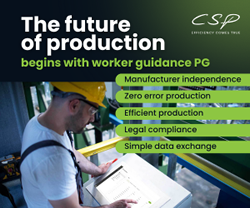Bionic Leaf Uses Bacteria To Convert Solar Energy Into Liquid Fuel
An Israeli Company is building a 20-hour-per-day solar power plant
Apple is building a solar-powered data "command center" in Arizona
Canadian Solar to Acquire Recurrent Energy from Sharp Corporation for $265 Million
Seven Reasons Cheap Oil Can't Stop Renewables Now
Wind power auction draws limited interest
Foreign funds flow set to skyrocket for renewable energy projects in India
Worry for Solar Projects After End of Tax Credits
America's wind installations grew six-fold in 2014
Amazon Invests In 150MW Indiana Wind Farm To Power Its Data Centers
How the Oil Price Slump Helps Renewable Energy
Recycling firm unveils city's first commercial wind turbine
Report: Forget Stocks, Invest In Solar Panels
Gov. Brown's renewable energy plan could boost solar, wind industries
REBOUND IN CLEAN ENERGY INVESTMENT IN 2014 BEATS EXPECTATIONS
Records 1396 to 1410 of 2275
First | Previous | Next | Last
Featured Product

